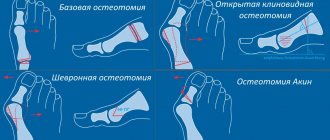Is it worth removing a lipoma, how dangerous is it and why does this tumor occur? These are the most common questions asked by people who have discovered a nodular lump under their skin.
In order to answer these questions, you need to consider all aspects of the disease: etiology, symptoms, prevention, direct removal of the lipoma, reviews of people who have already removed lipomas using various methods.
Etiology of lipomatosis
The causes of lipomatosis are not yet reliably known. Scientists put forward at least two theories for the occurrence of lipomatosis, both of which are quite viable.
- According to the first theory, a person mechanically injures acne on the skin, which provokes a strong inflammatory process. That is, the duct of the sebaceous gland is blocked, a boil is formed, which, in turn, develops into a wen. This theory perfectly explains the reasons for the formation of a single lipoma, but does not explain the etiology of lipomatosis - multiple lipomas.
- The second theory for the appearance of lipomas is a violation of the biochemical process of fat metabolism, as a result of which the amount of adipose tissue increases. And the reasons for the violation of fat metabolism itself can be based on psychological and physiological stress (infectious diseases, hypothermia, climate change, etc.) In this case, it is important to fight the root cause of the disease, because even if the lipoma is effectively removed, reviews warn about the risk of relapse of the disease.
There is evidence that genetic factors play a significant role in the etiology of lipomatosis, but this theory does not yet have scientific evidence. Also, many scientists claim a relationship between lipomatosis and endocrine diseases and pancreatic pathologies. There is evidence of a hypothetical relationship between the formation of wen and alcoholism.
Types of lipomas
| Types of lipomas | |||||
| Classic | Combined | ||||
| — | Fibrolipoma | Myolipoma | Angiolipoma | Myelolipoma | Maxolipoma |
| Adipose tissue | Connective tissue | Muscle fibers | Vessels | Hematopoietic cells | Mucous tissue |
The composition of a lipoma can be determined histologically, when some of the cells from the neoplasm are taken for examination under a microscope.
The tumor can have both clear boundaries and blurred ones, when the wen smoothly transforms into normal adipose tissue. For a dermatologist, diagnosing a wen, as a rule, does not present any problems.
Is lipoma dangerous?
Lipoma is a benign formation, but it can cause aesthetic discomfort, especially if the lipoma is large or requires removal of a lipoma on the neck; reviews indicate that most people want to get rid of the tumor.
The location of the lipoma is also of great importance. If it is located near a joint, it can affect the degree of its mobility. If there is proximity near a nerve ending, pain or numbness may occur.
Patients are often concerned about a natural question: can a benign formation turn into malignant? This is theoretically possible, but in practice it is extremely rare. In addition, there is always a risk of misdiagnosis when a malignant tumor is mistaken for benign.
Therefore, it is worth removing a lipoma for reasons of physical and emotional comfort, as well as to prevent the tumor from becoming malignant.
Laser removal of fatty tissue (lipoma) – procedure, photos, reviews and prices
The appearance of new growths on the skin, even the most harmless ones, causes us a lot of distress. After all, this is at least an aesthetic defect, and sometimes also additional physical discomfort.
Removing fatty tumors with a laser is one of the most effective and safest ways to get rid of a problematic tumor, minimizing the risk of its re-formation, as well as the likelihood of swelling, infiltrates or inflammatory processes.
How and in what cases is this procedure carried out? Is it always necessary and how much will it cost? What about safety, are there any restrictions and contraindications? TecRussia.ru studies all the subtleties and nuances:
Content:
↑ What are wen and is it necessary to get rid of them?
What we colloquially call a “fat”, doctors call a lipoma. This is one of the most common benign formations (tumors) of the skin. Its appearance is caused by pathological proliferation of fat cells, but the reasons that trigger this process have not yet been precisely determined.
Lipoma can form on any part of the body where there is adipose tissue - on the legs, arms, torso, neck and even head. Externally, it looks like a mobile subcutaneous formation of soft consistency, on average up to 2-3 cm in diameter, usually painless when palpated.
Oncologists do not consider it strictly necessary to remove these tumors immediately upon detection, since they do not pose a health hazard. However, it is important to understand that:
- The wen will not disappear on its own. That is, if it is located on an open area of the body and causes aesthetic discomfort, you will have to act. There is no point in waiting for everything to “resolve” over time.
- Moreover, any wen will grow. Perhaps very slowly, but steadily. As the lipoma grows, it can reach 10-15 cm in diameter, and it begins to compress the surrounding tissues and nerve endings, causing noticeable pain.
- If you immediately remove a small tumor, a barely noticeable mark will remain on the skin, but after removing a large wen, we will be talking about a scar of a very impressive size.
- The presence of a hereditary tendency in combination with external factors can lead to the transformation of a lipoma into a malignant formation - liposarcoma. This is an extremely unlikely scenario, but it should not be completely discounted.
READ ALSO: Manicure with dots: the best 52 photos of dotted nail design ideas
| This is what lipomas (lipomas) look like: photo 1,2 - on the arm and on the head, photo 3 - after removal: | |
↑ Laser removal of wen: pros and cons
To get rid of a lipoma, it is necessary to completely excise its contents and membrane, without leaving a single pathologically altered fat cell - otherwise, with almost 100% probability, a relapse will occur, and often with a much more aggressive course. This can be done in several ways, but the most popular today is laser removal. Its main advantages are usually indicated as follows:
- High precision of the beam, due to which the surrounding healthy tissue is practically not affected, and the tumor is completely exfoliated along with the capsule.
- Carbon dioxide lasers, which are used in surgery, simultaneously perform two tasks - removal of pathological tissue, as well as coagulation and disinfection of the surgical field. This promotes faster healing and reduces the risks of complications and side effects.
- During the operation, the tumor itself is not destroyed (unlike, for example, laser removal of moles), which allows it to be immediately sent for histological examination.
READ ALSO: HIV rash
| In addition to laser, several more methods can be used to remove wen: surgical (complete mechanical enucleation of the tumor along with the capsule), puncture-aspiration (pumping out the contents of the capsule through special syringes) and radio wave (excision of the tumor with a radio wave knife) |
At the same time, the laser also has its disadvantages that limit the possibility of its use:
- If the lipoma is large in size and/or located deep in the tissues, it can only be completely and safely removed by surgical excision
- Some experts, based on personal experience, believe that the number of relapses after removing fatty tissue with a laser is slightly higher than when using the traditional surgical method. There were no statistics collected that would confirm this information, but it is not so rare in the comments of specialists.
↑ How the operation goes
Laser removal of fatty tissue can be performed by an oncologist surgeon, as well as a general or plastic surgeon specializing in working with neoplasms.
If the lipoma is small, the procedure is performed under local anesthesia. The outer skin is cut with a surgical laser, which simultaneously coagulates (“seals”) the damaged blood vessels. Then the surgeon carefully spreads the skin apart, grabs the capsule of the wen with a clamp and pulls it up.
After this, a laser is used to remove the lipoma along with the capsule, and at the same time its residual fragments are destroyed. Then the edges of the wound are sutured with a cosmetic suture, and a gauze bandage is applied to its surface.
| Before and after laser fat removal. Photo 1,2 - making an incision and isolating the capsule: | |
| Photo 3.4 – tumor desquamation: | |
| Photo 5.6 – application of postoperative sutures: | |
The entire operation takes from 15 to 40 minutes depending on the size and location of the lipoma. As a rule, upon completion, the patient immediately returns to his normal routine, with the exception of certain complex cases where 1-2 days of bed rest may be necessary.
READ ALSO: Fatty spots on the body: as a result of folk customs, the reasons for the appearance of lipoma
↑ Contraindications, complications, side effects
Factors that exclude the possibility of laser removal of wen are mainly general surgical (i.e., if they are present, no operations are performed in principle):
- Pregnancy and lactation
- Menstruation
- Herpes, inflammation of the skin at the site of the proposed intervention
- Diabetes
- Immunodeficiency
In addition, the laser technique is not used when working with large-sized wen; in this case, only surgical excision gives a good result.
Regarding possible complications and side effects, the most common problem is recurrence of lipoma. This happens when it is not completely removed (most often due to the unprofessionalism of the surgeon); in particularly difficult cases, even lipomatosis is possible - a condition when instead of one incorrectly removed wen, several new ones appear at once. The problem is unpleasant, but it is not difficult to avoid: it is enough to entrust the operation to an experienced specialist with a good reputation.
↑ How much does it cost to remove a lipoma with a laser? Current prices
The costs of the operation will depend mainly on the size and location of the lipoma (based on these characteristics, 3 categories of complexity of neoplasms are distinguished), as well as the qualifications of the surgeon. Average prices for laser removal of wen in Moscow are:
- I category of complexity (small-sized formations in anatomically simple areas) – from 3,000 to 9,000 rubles;
- II category of complexity (medium-sized or small formations in anatomically complex areas) – from 5,000 to 15,000 rubles;
- III category of complexity (large-sized formations in anatomically complex areas) – from 7,000 to 20,000 rubles.
News MirTesen
Surgical removal of lipomas
The classic method of getting rid of lipomas is surgery. It is performed under local anesthesia, so the maximum discomfort the patient will experience in the surgeon’s office is the pain from an injection with an anesthetic.
The surgeon makes a small incision in the skin, gently squeezes out the wen and stitches the wound. If the lipoma is large, fluid may accumulate in the resulting cavity. In this case, it is advisable to install drainage. Removing lipomas surgically, reviews of which can be obtained from any doctor, has a significant drawback: the formation of scars. If the resection is carried out on the back or scalp, this problem is not significant, but to get rid of wen in the face it is better to choose another method.
Reviews from patients who have already undergone the procedure indicate that after surgery, swelling or swelling may occur at the removal site. As a rule, the rehabilitation period ends after 7-10 days. A person can return to everyday life immediately after surgery.
Treatment principle
What are the causes of acne on the face?
How to get rid of a wen on the head depends on the size of the tumor. Treatment should be prescribed only by a dermatologist. Under no circumstances should you remove, pierce or cut out wen on the head or back of the head yourself. Damage to the cyst can lead to infection and the development of suppuration.
After examining the patient, the doctor will offer a choice of two treatment methods - injections to resolve the lipoma or surgical removal.
Injections involve an injection of a special drug directly into the body of the wen. The drug promotes the resorption of fats, so after the procedure there is a gradual decrease in the size of the tumor. To get rid of small wen, the injection is carried out only once. If the cyst is large, it is possible to re-administer the drug a week after the start of treatment. This method has a number of advantages:
- painlessness;
- fast efficiency;
- no scars after cyst removal.
Injections are given only if the wen is not dangerous and has not been damaged or infected. If the formation causes discomfort, before deciding on methods of getting rid of the lipoma, the doctor performs a puncture to determine the structure of the contents of the cyst.
Surgical removal
Removal of wen on the head is indicated in the following cases:
- addition of infection;
- large tumor size;
- pain and discomfort.
The doctor decides how to remove the wen after examination.
Typically, to remove such tumors, an incision is made and the entire contents are carefully cleaned out. This procedure is indicated for large wen sizes.
If the cyst is located in areas where large vessels are located, endoscopic removal is used. In this case, a small incision is made on the side of the wen, which allows you to carefully examine all the features of the location of the contents of the cyst and remove it without touching the vessels.
For small tumors, laser treatment can be used. The advantages of the method are the absence of scars and the need to shave the hair for the procedure.
Home treatment with folk remedies
Having figured out how to remove a wen on the head, many will think about alternative methods that allow treating such tumors.
For a wen on the head, treatment with folk remedies should be used only after consultation with a specialist. You can get rid of the problem yourself using one of the following recipes.
- Cut off a large aloe leaf, rinse thoroughly and dry. Apply the cut site to the tumor three times a day until it begins to decrease in size.
- Pour two large spoons of dried leaves of the coltsfoot plant into a glass of boiling water and leave for two hours. Then soak a cotton swab in the broth and apply it to the lipoma for a few minutes.
The effectiveness of such methods remains questionable, since if the tumor is large, it can only be gotten rid of through removal.
Whether it is necessary to get rid of lipomas if they do not cause discomfort - everyone decides for themselves. The main thing is to entrust the removal to a qualified specialist, and under no circumstances try to do it yourself.
01 Aug 2020 3
Laser method
Removing lipomas with a laser is the most effective, safe and painless. The advantages of the method include:
- lack of blood;
- minimal risk of infection;
- absence of pain;
- absence of scars;
- Duration of the procedure is 1 minute.
The laser beam helps to remove the wen from the surrounding tissues and at the same time “seals” the capillaries. If the lipoma is large, the surgeon will need to close the wound.
The removed lipoma is sent for mandatory histological examination. But if the size of the formation is very small, the fat will be completely destroyed by the laser beam.
According to statistics, an increasing number of people are using laser lipoma removal. Reviews indicate painlessness and the absence of a rehabilitation period.
Postoperative period
After surgery to remove a fatty tumor, you must first send the excised tumor for histological analysis. The patient will need to wear a patch or bandage for several days or a week to prevent infection from entering the wound.
Every day before going to bed, the operated area where the lump was once located should be treated with alcohol-containing substances. In some cases, doctors additionally prescribe antibiotics.
During the rehabilitation period, it is recommended to eat only healthy foods. Whatever the surgical operation, it is always stressful for the body, even if the person himself does not feel it. This is why an integrated approach during the recovery period is important.
Radio wave method
Removing a lipoma using radio waves has the same advantages as laser removal: a person has the opportunity to get rid of a lipoma without pain, scars and bleeding. However, it is impossible to remove formations larger than 3 cm using this method.
The principle of the method is to separate the lipoma from the surrounding tissues with an invisible radio wave knife. At the same time, exposure to frequencies promotes rapid tissue regeneration. The doctor takes out the entire fat capsule and sends it for histological examination. At the site of removal, a small damage remains, resembling a scratch, which completely heals after a few days.
It is important to know that the presence of a pacemaker makes radio wave removal of a lipoma impossible. Feedback from patients indicates the high speed of the procedure and the ability to return to everyday life immediately after the procedure.
General information about pathology
Lipoma grows very slowly and does not cause any symptoms. Sometimes it causes pain, but this mainly concerns large tumors, which can have a diameter of up to several centimeters and begin to put pressure on the nerves. Since the tumor itself is well separated from the surrounding tissues due to the connective bursa, it easily moves under the fingers.
It is not known why lipomas form. It is believed that single tumors are formed as a result of trauma, while multiple lipomas are genetically determined. Their diagnosis is based on appearance and palpation.
However, any tumor should be examined by a specialist. Only a physician has the knowledge to distinguish a lipoma from a stagnant cyst that forms in the area of the hair follicle. Or from liposarcoma, which is already classified as a malignant tumor. Therefore, if you find a small lump, it is best to choose the time to visit a doctor.
Both lipoma and liposarcoma are derived from adipose tissue. However, a malignant tumor penetrates into surrounding tissues, so it is usually immobile and cannot be moved from its place. If there is any doubt, the doctor orders an examination - a biopsy to study the taken tissue under a microscope and MRI.
How to choose a method?
The variety of lipoma removal methods creates a problem of choice for patients. Taking into account the symptoms of lipomatosis, every person understands the need for such a procedure as lipoma removal. Reviews and recommendations indicate the positive and negative sides of each method, so it is difficult to make a choice on your own.
The best and easiest way to make the right choice is to consult a dermatologist. He will inspect the formation, assess its location, size, concomitant diseases of the person and propose a treatment method that will be most suitable in his case.
However, choosing a doctor is an essential part of the success of the event. In this case, you can and should rely on people’s recommendations. For example, if you need lipoma removal in Moscow, reviews will provide significant assistance in making your choice.
Thus, lipomatosis is an unpleasant but not dangerous disease. Modern methods allow you to quickly and effectively deal with formations. A dermatologist will not only help you get rid of lipoma, but will also determine the cause of the problem, and therefore tell you how to avoid the formation of lipomas in the future.
How to remove a lipoma
There are a lot of methods for removing lipomas and the doctor will always be able to prescribe the appropriate method.
Medicine offers two main methods of treating subcutaneous formation:
- surgery with a scalpel;
- hardware techniques.
Treatment tactics are selected depending on the size of the wen, its location, the number of growths, and the general condition of the patient. In addition to traditional surgery, tumors can be removed using endoscopy, laser therapy, puncture-aspiration method, radio wave therapy and cryodestruction.
Surgical excision
Surgical excision of a lipoma is necessary for large tumors, deep localization or multiple types of pathology. Surgery involves the use of local or general anesthesia. Healing of a postoperative wound requires more time than after using hardware methods. Also, after surgery, scars remain, which sometimes have to be removed with plastic surgery.
Endoscopic removal
Recommended for removing small fatty deposits. The doctor makes a tissue incision not on the tumor itself, but nearby in a skin fold or in an area hidden from view. In this way, you can achieve a good cosmetic effect. The doctor inserts instruments and an endoscope into the incision, removing the lipoma.
Laser destruction
Doctors often use laser lipoma removal, since this method is minimally invasive and allows you to get rid of the lipoma without scars. The advantage is that the procedure takes a short time, after which the patient can go home. When a lipoma is removed with a laser, its capsule is destroyed, which virtually eliminates the risk of relapse. There is no bleeding during removal, since the laser beam, cutting through the tissue, immediately cauterizes the edges of the wound. This is a good prevention of infection, suppuration and swelling.
We recommend reading: Ovarian cystoma - symptoms and treatment for women
Puncture-aspiration method
This procedure is performed on an outpatient basis. Using a needle, the doctor pumps out the contents of the lipoma with a special syringe. If this method is used as the only one, then there is a high probability of recurrence of the wen, because its capsule remains under the skin. However, puncture aspiration is often performed before other methods of therapy in order to first reduce the size of the formation.
Radio wave method
To remove lipomas using the radio wave method, electromagnetic radiation (gamma knife) is used. Tissue dissection is carried out with high-frequency waves, which eliminates wound infection and bleeding. During radio wave removal of a lipoma, heat production begins in the neoplasm cells, which leads to their death. After such a procedure, no complications occur, and rehabilitation lasts a minimal period of time. After just one or two weeks, no trace remains at the site of the lipoma.
Cryodestruction
This method is carried out using liquid nitrogen, under the influence of which the tissue of the wen is destroyed. Low temperature leads to freezing of intracellular and intercellular fluid, as a result of which the functioning of pathological cells is disrupted and they disintegrate.
During cryodestruction the following stages occur:
- Immediately - paleness, coldness and loss of sensitivity of the skin.
- A few hours later - hyperthermia, tingling and burning.
- Every other day, the wen turns into a blister with watery or bloody exudate.
- A few days later, new skin forms in place of the blister.
Several months after treatment of the skin defect, slight pigmentation is present in its place. Cryotherapy is performed without anesthesia, since the cold itself is an anesthetic. The integrity of healthy tissues is not compromised during the procedure. After freezing, the recurrence of the wen is excluded. Cryotherapy lasts no more than two minutes, and the recovery period consists of taking vitamin complexes to accelerate skin regeneration.










